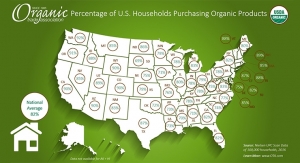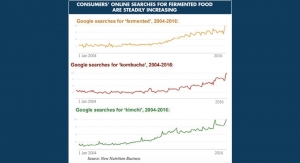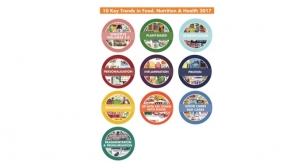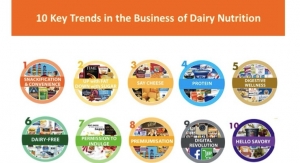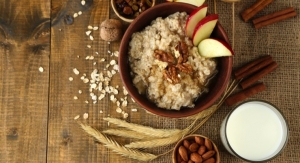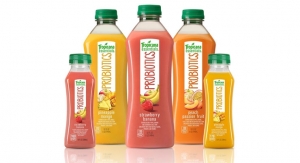Rebecca Wright07.01.08
Without even trying, and purely by chance, every article in this issue in some way features superfruits, a reflection of how they touch such a wide range of business sectors, from beverages, to herbs and botanicals, to flavors and colors. Besides "natural" and "organic," I can't remember a trend that loomed this large across so many different industries. So where did this love affair with superfruits begin?
Apparently, according to Wikipedia, superfruits gained their celebrity status around 2004, when USDA revealed the ORAC (oxygen radical absorbance capacity) values of 100 common foods. Blueberries were at the top of that list. With a lot of help from the media, a new category-i.e. business opportunity-was born. And just in time for the many businesses experiencing stagnating sales in supplements and functional foods.
Pretty soon fruits like pomegranate, noni, mangosteen and goji were making appearances in natural food stores, grocery stores and eventually bars (via tasty drinks such as the pomegranate martini). Indeed, superfruits have managed to capture the hearts and minds of millions of consumers who continue to be intrigued by these fruits from far-off regions, fruits with rich histories. And there are many more on the way.
Today, superfruits are considered the supermodels of the fruit and vegetable world, only without the obnoxious attitudes. They are simple yet complicated, elegant yet exotic, all at the same time. But the reason for their popularity is simple, according to Julian Mellentin, editor of New Nutrition Business: "Fruit is the perfect health food and the perfect health ingredient. It has a range of advantages that few other foodstuffs can match; advantages which are being constantly polished by science and communicated to a wider audience by the media and marketers." But most of all, Mr. Mellentin said, "Fruit is fun, sweet and sexy, qualities a Brussels sprout will never possess." And sex sells, right?
Talk about sex appeal, Tropicana recently rolled out a couple of TV commercials extolling the virtues of its new super premium juices (see this issue's beverage update which starts on page 38 for more details). With the help of a woman donning a sexy, sultry English accent, in addition to graphic displays of fruit and wildly pouring juice, the Raspberry Acai juice comes off particularly appetizing. Is this what they call food porn?
Consumers know they need to increase their intake of fruits (and vegetables), and being able to do that through a superfruit beverage is particularly attractive to them. On top of this, Mr. Mellentin points out, "Superfruit beverages are fruits at their most convenient. Moreover, consumers are willing to pay premiums for convenience." This is certainly attractive for companies marketing superfruits.
What about clinical substantiation? For some of the superfruits, blueberry, cranberry and pomegranate in particular, Mr. Mellentin claims there is actually more evidence of health benefits compared to everyday mass-market fruits like apples, oranges and bananas. For now, however, most superfruits are associating themselves with an antioxidant benefit, rather than a specific health issue.
A lot of market research firms predicted that 2008 would be the year of the superfruit, and they seem to be right on target. What many want to know for the future is how long this love affair will last. Ultimately, it will be up to consumers to decide. For now, it seems, variety is the spice of life.
Rebecca Wright
Editor
rwright@rodpub.com
Apparently, according to Wikipedia, superfruits gained their celebrity status around 2004, when USDA revealed the ORAC (oxygen radical absorbance capacity) values of 100 common foods. Blueberries were at the top of that list. With a lot of help from the media, a new category-i.e. business opportunity-was born. And just in time for the many businesses experiencing stagnating sales in supplements and functional foods.
Pretty soon fruits like pomegranate, noni, mangosteen and goji were making appearances in natural food stores, grocery stores and eventually bars (via tasty drinks such as the pomegranate martini). Indeed, superfruits have managed to capture the hearts and minds of millions of consumers who continue to be intrigued by these fruits from far-off regions, fruits with rich histories. And there are many more on the way.
Today, superfruits are considered the supermodels of the fruit and vegetable world, only without the obnoxious attitudes. They are simple yet complicated, elegant yet exotic, all at the same time. But the reason for their popularity is simple, according to Julian Mellentin, editor of New Nutrition Business: "Fruit is the perfect health food and the perfect health ingredient. It has a range of advantages that few other foodstuffs can match; advantages which are being constantly polished by science and communicated to a wider audience by the media and marketers." But most of all, Mr. Mellentin said, "Fruit is fun, sweet and sexy, qualities a Brussels sprout will never possess." And sex sells, right?
Talk about sex appeal, Tropicana recently rolled out a couple of TV commercials extolling the virtues of its new super premium juices (see this issue's beverage update which starts on page 38 for more details). With the help of a woman donning a sexy, sultry English accent, in addition to graphic displays of fruit and wildly pouring juice, the Raspberry Acai juice comes off particularly appetizing. Is this what they call food porn?
Consumers know they need to increase their intake of fruits (and vegetables), and being able to do that through a superfruit beverage is particularly attractive to them. On top of this, Mr. Mellentin points out, "Superfruit beverages are fruits at their most convenient. Moreover, consumers are willing to pay premiums for convenience." This is certainly attractive for companies marketing superfruits.
What about clinical substantiation? For some of the superfruits, blueberry, cranberry and pomegranate in particular, Mr. Mellentin claims there is actually more evidence of health benefits compared to everyday mass-market fruits like apples, oranges and bananas. For now, however, most superfruits are associating themselves with an antioxidant benefit, rather than a specific health issue.
A lot of market research firms predicted that 2008 would be the year of the superfruit, and they seem to be right on target. What many want to know for the future is how long this love affair will last. Ultimately, it will be up to consumers to decide. For now, it seems, variety is the spice of life.
Rebecca Wright
Editor
rwright@rodpub.com


